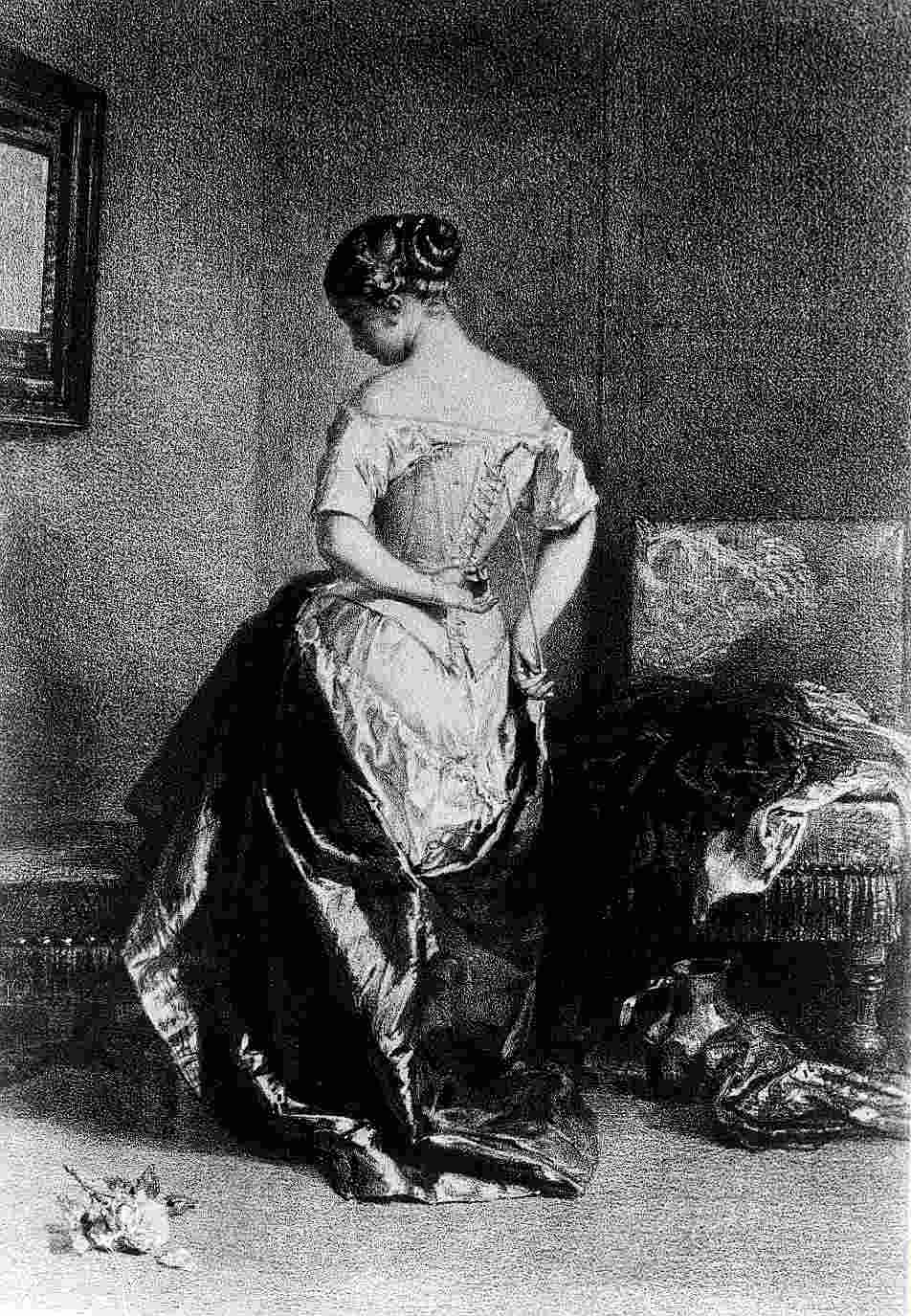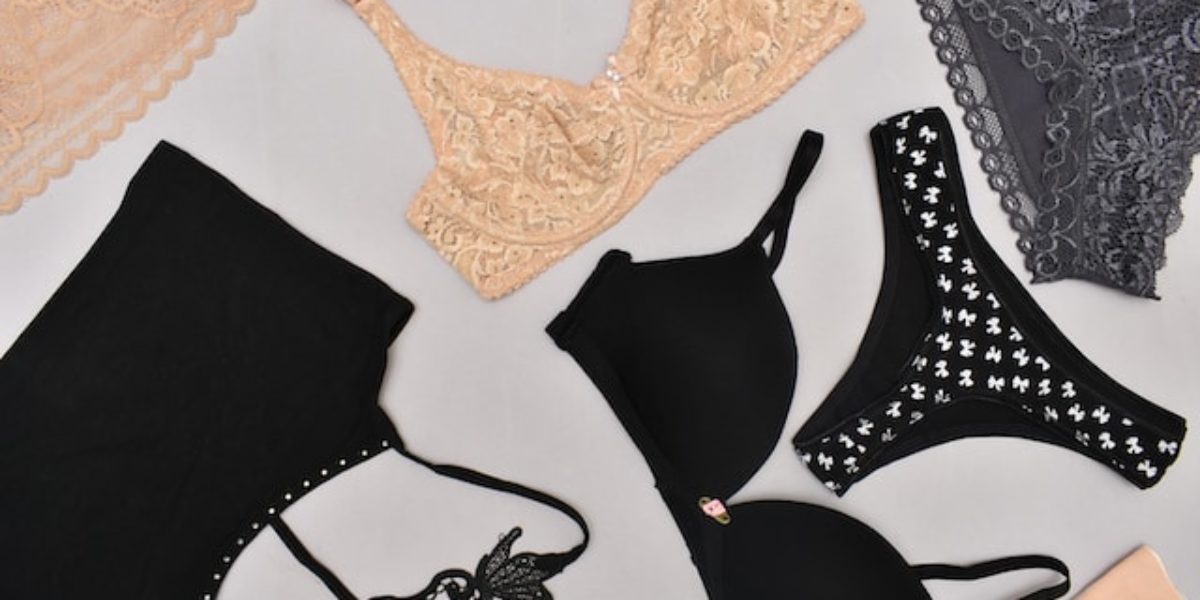Els de Baan is a fashion journalist. She taught for over 33 years at the Willem de Kooning Academy in Rotterdam. For the Third Floor, she wrote the article below.
What are the ideal body shapes? It’s a hard question to answer, because ideals of beauty are changing constantly. They’re set by the times and by fashion: one moment a broad waist is fashionable, the next moment everyone wants a narrow waist. So how do you go about keeping up with the latest trends? Sometimes underwear can help achieve that ideal shape.
Broadly speaking, there are two types of underwear. The first can alter the shape of your figure. You can ‘knead’ your upper body into shape, for instance, using a corset. Then you have the kind of underwear that adjusts your figure by adding bits: a hooped petticoat, for instance, shoulder pads or padded bras.
Fashion image
Fashion trends around 1900 clearly show how difficult it can be to keep up with shifting ideals of beauty. Women back then aspired to an ‘hourglass’ figure. Shoulders and hips were supposed to be roughly the same width, but the waist had to be extremely narrow. It was for good reason that they called it a ‘wasp waist’. To achieve that figure – which virtually no one has in real life – women had to be cinched into tight corsets. So tight, in fact, that – narrow waist and full bosom notwithstanding – they could hardly move in them. That made it impossible for fashionable ladies to work.

Barely 20 years later, the hourglass ideal was replaced by an entirely new one. According to this latest fashion, the woman’s body ought to be flat like an ironing board. The new type was described as garçonne, meaning ‘boyish’. Women traded in their corsets for ‘flatteners’, which held the breasts in and made it seem as though their shoulders, bosom, waist and hips had all merged into a single straight mass. But this ideal too gave way after a while. By the 1930s, women wanted a somewhat more rounded figure again and the corset, which carefully accentuated the breasts, was brought back out of the wardrobe. With the addition of shoulder pads, the corset created smooth lines.
In other words, if a woman wanted to keep up with fashion, her body had to comply with several entirely different ideals in the space of just three decades. And they continued to come thick and fast in the years that followed. In the 1940s, the body was supposed to look ‘angular’, which only took a simple corset and a straight shoulder line to achieve. But after the Second World War, women were keen for curves again, with the emphasis placed once more on the bosom, waist and hips.
Fifteen years later and the boyish figure was back in vogue. The garçonne ideal was popular in this period with youthful girls who had yet to develop too many pronounced feminine curves. Corsets gradually disappeared from wardrobes and the female body was seemingly freed forever from pinching, movement-restricting underwear.
Underwear
Until around 1960, fashionable women wore several layers of undergarments, each with its own function. Long undershirts were once worn next to the skin by men and women alike. No other underwear was worn beneath them and they also served as underpants until well into the 19th century. Men crumpled the shirt up between their legs, while women simply let it hang. Undershirts were usually made of linen or cotton, which absorbed sweat and dirt. Linen and cotton were also easy to wash. This was perfect, because it meant that non-washable outerwear, such as breeches, skirts and jackets were kept clean on the inside. The undershirt also prevented rough outerwear from damaging or irritating the skin. The second layer of undergarments, which the woman wore over her undershirt, supported and shaped her figure: a corset, laced bodice or brassiere, for instance, although the latter was worn under the undershirt.
From the 19th century onwards, women wore even more layers of undergarments in addition to those two. They added bustles and petticoats, both hooped and otherwise, all of which helped them achieve the desired figure. Men too could be tempted to wear similar items of clothing. They occasionally added extra padding to their calves, for instance, to make them look bigger. And some men were fond of hefty shoulder pads that made them look ‘more masculine’.
Outerwear and underwear
After all those years of clearly distinguishing between underwear and outerwear, the dividing line between the two faded around the middle of the 20th century. When James Dean appeared in a white T-shirt in the 1955 film Rebel Without a Cause, he roused the fury of older viewers. He wore it like a shirt for everyone to see, while to the older generation it was a piece of underwear that it was unseemly to reveal. Dean’s clothing style was widely imitated and the T-shirt swiftly became an acceptable outer garment.
Women too increasingly began to wear their underwear as outerwear. Nowadays, for instance, they sometimes wear a playful corset, bustier or bra (often beneath an open jacket or see-through blouse) as outerwear. Underpants are often more visible too, boys and girls alike can be seen wearing the brand name on a boxer short waistband visible above the waist of their trousers.
Underwear is a design product
Underwear materials and designs became more varied from the 1960s. White, grey, salmon pink and cream-coloured underwear has given way to colourful designs made of synthetic materials. Cotton ones printed with flamboyant motifs also appeared on the market. Innovations like this were in keeping with the times: the ‘Swinging Sixties’ had begun, bringing with them a youth culture that represented a fresh way of looking at both culture and politics. It was a period of widespread liberation, in which young people began to look critically at fashion too. The designer Mary Quant (London, 1930) introduced a successful underwear line in this period and other progressive designers and fashion houses were quick to follow her example. Henceforward, underwear was no longer ‘just’ a functional product, but a design product worthy of being seen.

